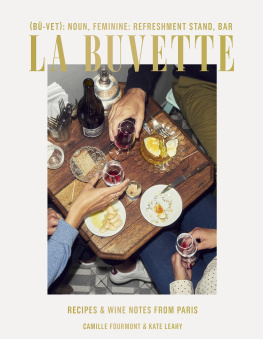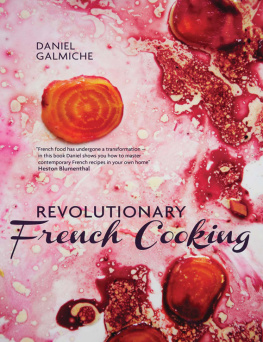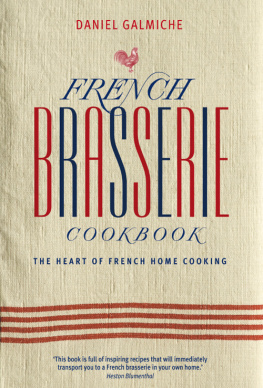The
B ISTROS, B RASSERIES,
and W INE B ARS
of P ARIS

EVERY DAY RECIPES
FROM THE REAL PARIS

D ANIEL Y OUNG
PHOTOGRAPHS BY DANIEL YOUNG


F OR V IVIAN
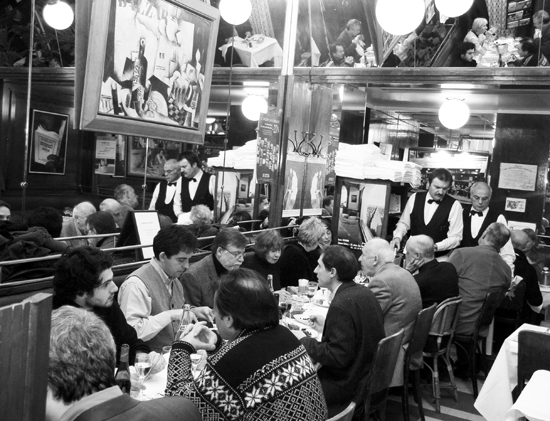
Contents
Q UELLE E ST LA D IFFRENCE?
W HAT, YOU ASK, IS THE DIFFERENCE BETWEEN A BISTRO, A BRASSERIE, AND A WINE BAR? Good question: During the past two years Ive consulted dozens of Parisian restaurateurs, chefs, waiters, bartenders, diners, etymologists, lexicographers, journalists, cultural historians, and hairdressers on this very matter.
The responses, varying considerably in perspective, tone, and length but rarely in their utter certainty, have been a continuous source of surprise and enlightenment, as much now as at the onset. And so it is only a minor disappointment that Ive yet to hear any Parisian, not even the pillars of these establishments, the ever-present habitus who appear to physically hold up their wood, Formica, or zinc-style bar tops, adequately explain the distinctions among these familiar haunts.
The flawed definitions and blurred comparisons reflect the evolution not only of these three treasured institutions but also of what is expected of them. Parisians are ambivalent toward change and accept, embrace, or reject it at their own pace and rarely without the familiar lament ce nest pas comme avantits not like it used to be. But though they crave the old-fashioned virtues of the classic bistro, brasserie, and wine bar, few truly want these establishments to operate exactly as they did before. Its illustrative to recall that all three institutions began with an emphasis on liquid over solid refreshment. Cooking was almost an afterthought. Many Parisians over fifty still dont regard bistros as places to seek out a meal.
At a bistro you only drink, says Bernard Marmels, a veteran directeur (floor manager) at the brasserie Au Pied de Cochon, explaining the difference between a bistro and brasserie.
That dated view notwithstanding, todays bistros operate first and foremost as dining places, a growing number of them exceptional ones. The chefs at the finest modern, neo, or gastro bistros can garner the same acclaim and reservations backlog as their counterparts at highly rated, Michelin-starred restaurants, many of whom are expanding into the bistro trade themselves. And the traditional wine bar with only cheeses and charcuterie to feed its clientele is vanishing from the scene. The bar needs a kitchen, too.
Habits have changed, notes Franois Briclot of Le Rouge-Gorge, a wine bar with a bistrostyle menu. If you only give them saucisson youre finished.
The understanding of these terms is also complicated by their current vogue. The instant cachet attached to a new place calling itself a bistro, a brasserie, or a bar vin, as opposed to a mere restaurant, encourages opportunistic entrepreneurs in France and elsewhere to apply these buzzwords to establishments that resemble their forebears in name or decor only. And because the genuine articles are colloquial locales revered as much for their discomforts as their comforts, posting one of three B-words outside a new restaurant can turn limitations into advantages. A bistro, for example, makes tiny tables, rickety chairs, zero elbow room, mismatching stainless-steel cutlery, and waiters who editorialize on your food selections appear trendy. Only at a brasserie can clamor, brusque table service, precooked main courses, and unrelenting rapidit be linked, and rightly so, with high style and glamour. Having a glass of wine poured from a previously opened bottle is a privilege, not a sacrilege, at a wine bar.
But perhaps the biggest obstacle to nailing down the differences among bistro, brasserie, and wine bar is their shared identity. Together they nourish and sustain the Paris of Parisiansthe real and everyday Pariswith local food, flavor, style, sophistication, personality, and attitude. Like English pubs, Greek tavernas, Italian trattorias, and American diners, they are places where people go out to feel at home, only it isnt just any home were talking about. If a routine Tuesday night dinner in Paris is superior in fundamental ways to a celebratory Saturday soiree nearly anywhere else, it is a happy consequence of the extraordinary extent to which its best bistros, brasseries, and wine bars exalt the ordinary, from vins ordinaires, plats du jour, and rustic fruit tarts to ritual gestures, familiar faces, and replayed dialogue. Indeed, recognition itself is as much the ultimate reward for Henri Gonzales, a matre dhtel (headwaiter) who eagerly cultivates regularshis regularsat the brasserie La Coupole as it is for the woman of a certain age who comes in alone for lunch every Sunday, sits at the same table in his section, orders the same fish dish, and, after her first taste, beckons Gonzales over to deliver the same critique and elicit the same response:
Monsieur!
Qui, Madame.
The sole, its not like it was before.
Before what, Madame?
The alternate and most common French spelling of bistro has a silent t on the end. Yet finding the term bistrot stenciled on a plate-glass window, while helpful in this guessing game, is no guarantee the premises within fit that particular B classification to a T. The same is true of places that emboss their menu covers with the term brasserie or paint bar vin across the awnings. The Brasserie de la Poste is more bistro than brasserie, a conclusion its proprietor, Jrme Blanchard, not only shares but encourages.
Le Baratin, though certainly the wine bar it purports to be, is a purer example of the classic Parisian bistro than scores of small restaurants dressed and named for the part. Le Chantefable is without question a bistro, or so says its owner, Pierre Ayral, but it also meets the central criteria of a brasserie and a wine bar. So which one is it? And what exactly are the criteria useful in making that determination?
Here then is a twenty-question checklist, which, though neither scientific nor infallible, will help delineate the differences. If the place under consideration has no plats du jour, no bar to speak of, no overcrowded tables, and no Parisian soul, chances are its only a restaurant.
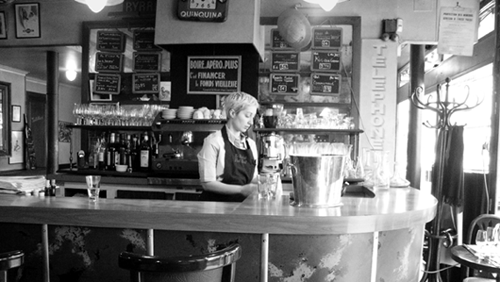
The calm before lunch service at le bistrot paul bert.
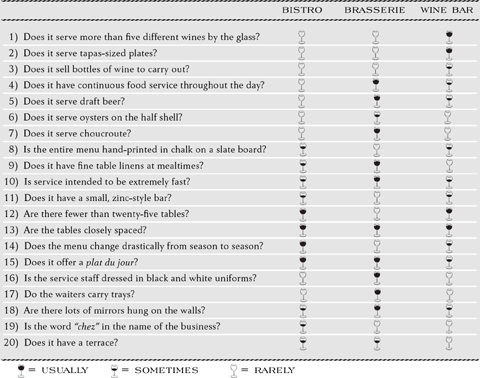
THE BISTRO
Parisians inside as well as outside the restaurant trade take great pleasure in recounting the origins of the term bistro(t). They date its infiltration into the French language to sometime after the Russian occupation of Paris in 1814. Hungry Cossacks demanding prompt attention at local pubs would shout out
Next page


